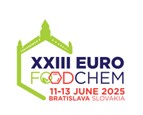Scientific journal
Journal of Food and Nutrition Research
Summary No. 4 / 2019
Kružík, V. – Grégrová, A. – Ziková, A. – Čížková, H.
Rape honey: determination of botanical origin based on volatile compound profiles
Journal of Food and Nutrition Research, 58, 2019, No. 4, s. 339-348
Vojtěch Kružík, Department of Food Preservation, University of Chemistry and Technology Prague, Technická 5, 166 28 Prague 6 Dejvice, Czech Republic. E-mail: Vojtech.Kruzik@vscht.cz
Received 28 April 2019; 1st revised 6 August 2019; accepted 25 September 2019; published online 11 November 2019
Summary: Generally, it is very difficult to determine which volatile compounds significantly contribute to the typical rape honey aroma. The aim of this research was to characterize, for the first time, the main volatile compounds present in Czech rape honeys using solid phase microextraction (SPME) followed by gas chromatography coupled to mass spectrometry (GC-MS). The study also explored possibilities to reliably identify and distinguish between rape and multifloral honeys on the basis of the profile of volatile compounds. A total of 28 unifloral rape honeys (Brassica napus) from local Czech beekeepers produced in 2014–2016 were analysed. Obtained data were statistically processed using principal component analysis, linear discriminant analysis and analysis of variance. Based on the results, the following compounds were the most abundant in each of the analysed Czech rape honeys (relative representation in percent): hotrienol (7.2–39.3 %), benzaldehyde (0.7–19.0 %), 3-methylbutanenitrile (0.1–15.7 %), 2-phenylethanol (1.0–10.2 %) and nonanoic acid (0.4–7.0 %). Moreover, 3-methylbutanenitrile and nonanoic acid were identified as the characteristic compounds for rape honeys. Nonetheless, the presence of 5–25 % of other botanical species in the honeys had a significant impact on the occurrence and representation of the individual volatile compounds.
Keywords: rape honey; quality; volatile compounds; aroma; origin; solid phase microextraction; gas chromatography–mass spectrometry
Download:
(pdf, 358.38 Kb, 933x)










